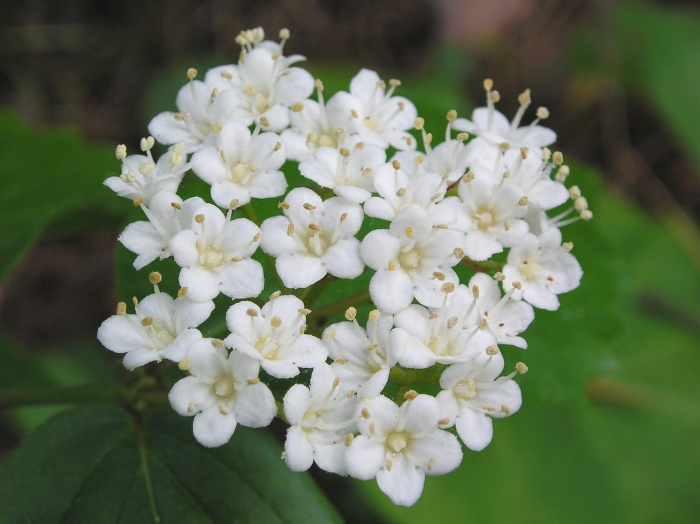Downy Arrowwood
(Viburnum rafinesquianum)
Downy Arrowwood (Viburnum rafinesquianum)
/
/

Superior National Forest
CC BY 2.0
Image By:
Superior National Forest
Recorded By:
Copyright:
CC BY 2.0
Copyright Notice:
Photo by: Superior National Forest | License Type: CC BY 2.0 | License URL: https://creativecommons.org/licenses/by/2.0/ | Uploader: Superior National Forest | Publisher: Flickr |


















Estimated Native Range
Summary
Viburnum rafinesquianum, commonly known as Downy Arrowwood, is a deciduous shrub native to the understory of deciduous forests in the North-Central United States, extending into parts of Southern Canada. It typically grows to about 2 meters tall and wide, with a rounded form and arching branches. The leaves are opposite, simple, and have a downy texture, hence the common name. In spring, Downy Arrowwood produces clusters of small, white flowers that are slightly malodorous, yet they attract pollinators. By late summer, these flowers give way to dark blue, berry-like drupes that are highly attractive to birds and other wildlife. The foliage turns a striking orange-red in late fall, adding seasonal interest to the landscape.
Downy Arrowwood is valued for its adaptability and ornamental qualities, including its spring flowers, attractive berries, and vibrant fall foliage. It is commonly used in woodland gardens, naturalized areas, and as a border shrub. This Viburnum prefers part shade to full shade and adapts to a range of soil types, though it thrives in well-drained soils with consistent moisture. While it is relatively low-maintenance, it can be susceptible to viburnum leaf beetle and fungal diseases if not properly cared for. It is not known for aggressive roots or significant invasiveness.CC BY-SA 4.0
Downy Arrowwood is valued for its adaptability and ornamental qualities, including its spring flowers, attractive berries, and vibrant fall foliage. It is commonly used in woodland gardens, naturalized areas, and as a border shrub. This Viburnum prefers part shade to full shade and adapts to a range of soil types, though it thrives in well-drained soils with consistent moisture. While it is relatively low-maintenance, it can be susceptible to viburnum leaf beetle and fungal diseases if not properly cared for. It is not known for aggressive roots or significant invasiveness.CC BY-SA 4.0
Plant Description
- Plant Type: Shrub
- Height: 4-6 feet
- Width: 4-6 feet
- Growth Rate: Moderate, Slow
- Flower Color: Cream, White
- Flowering Season: Summer
- Leaf Retention: Deciduous
Growth Requirements
- Sun: Part Shade, Full Shade
- Water: Medium
- Drainage: Fast
Common Uses
Bee Garden, Bird Garden, Butterfly Garden, Deer Resistant, Erosion Control, Hummingbird Garden, Low Maintenance, Rabbit Resistant
Natural Habitat
Native to the understory of deciduous forests in the North-Central United States and parts of Southern Canada
Other Names
Common Names: Downy Arrowwood
Scientific Names: Viburnum rafinesquianum , Viburnum rafinesquianum var. affine , Viburnum rafinesquianum var. rafinesquianum , Viburnum rafinesqueanum var. affine , Viburnum affine , Viburnum affine var. hypomalacum , Viburnum affine var. affine , Viburnum pubescens var. affine
GBIF Accepted Name: Viburnum rafinesquianum Schult.